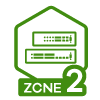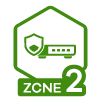Understanding DHCP Relay - Option 82 on Nebula with Cloud-Managed Switches
 Zyxel Employee
Zyxel Employee



Understanding DHCP Relay - Option 82 on Nebula with Cloud-Managed Switches
DHCP Relay with Option 82 is a feature that enhances DHCP's capability to manage network assignments with greater precision. This mechanism allows DHCP messages to carry additional identifiers, enabling DHCP servers to tailor IP assignment policies more closely to the network topology and client location.
What is DHCP Relay Option 82?
Option 82 in DHCP Relay is essentially an extension that appends extra information—specifically, an agent circuit ID and a remote ID—to DHCP messages. This additional data facilitates the creation of DHCP server policies that can match these identifiers, allowing for more refined IP address assignments within a network.
The Role of Agent Circuit ID and Remote Circuit ID
The inclusion of an agent circuit ID and a remote circuit ID in DHCP messages allows network administrators to define policies that recognize these IDs, enabling a more targeted assignment of IP addresses. For example, within a Windows Server environment, it's possible to configure DHCP scopes to respond differently based on these identifiers, potentially narrowing down the IP allocation range for specific clients or devices.
Agent Circuit ID
The agent circuit ID can include a variety of information, such as port identifiers, VLAN IDs, the switch's hostname, and custom strings. This identifier is particularly useful in environments where network topology or client location plays a crucial role in IP management. The agent circuit ID is composed of several elements:
- Ports: Represented by a combination of the slot ID (which indicates the stacking slot unit) and the port ID, with values typically expressed in hexadecimal format.
- VLAN: The VLAN ID, also in hexadecimal format, reflects the VLAN to which the client is connected.
- Switch Hostname: Converted from text to ASCII and then to hexadecimal, providing a unique identifier based on the switch's name.
Remote Circuit ID
The remote circuit ID usually utilizes the switch's system MAC address as its primary identifier, although custom strings can also be appended. This ID does not require conversion, as MAC addresses are inherently expressed in hexadecimal format.
Practical Applications of DHCP Option 82
Option 82 is invaluable for networks where clients might span multiple subnets, necessitating a method to assign IP addresses dynamically, yet with a level of static predictability. This is particularly relevant in scenarios where routing changes the source MAC address of packets, making it challenging for DHCP servers to assign IP addresses based on the original client's MAC address.
Configuring DHCP Option 82
Configuring DHCP Option 82 involves creating an Option 82 profile on network switches, specifying which identifiers to include. This setup is critical for networks employing VLANs or requiring precise control over IP address distribution.
Step-by-Step Configuration
- Create an Option 82 Profile: This includes specifying a name for the profile and deciding which identifiers (e.g., port, VLAN ID, switch hostname) to include.
- Bind the Profile to an Interface: After creating the profile, it must be associated with an interface that has DHCP relay enabled. This binding ensures that DHCP requests passing through this interface carry the additional Option 82 information.
Conclusion
DHCP Relay with Option 82 is a powerful tool for network administrators, offering enhanced control over IP address assignment. By leveraging additional identifiers, networks can achieve more precise and efficient IP management, catering to complex network architectures and diverse client locations. This feature is particularly beneficial in larger, segmented networks where the ability to dynamically assign IP addresses based on location and device type can significantly optimize network performance and management.
Categories
- All Categories
- 441 Beta Program
- 2.9K Nebula
- 208 Nebula Ideas
- 127 Nebula Status and Incidents
- 6.4K Security
- 528 USG FLEX H Series
- 331 Security Ideas
- 1.7K Switch
- 84 Switch Ideas
- 1.3K Wireless
- 50 Wireless Ideas
- 6.9K Consumer Product
- 294 Service & License
- 461 News and Release
- 90 Security Advisories
- 31 Education Center
- 10 [Campaign] Zyxel Network Detective
- 4.7K FAQ
- 34 Documents
- 86 About Community
- 99 Security Highlight